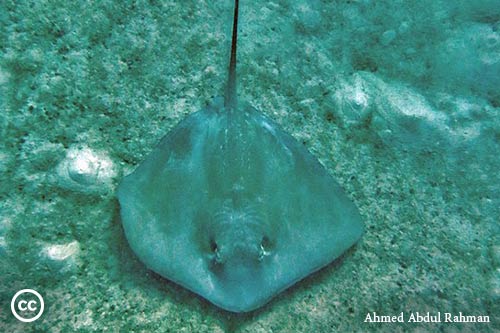Himantura jenkinsii
Rays
Environment and movement of the diurnal species
- The species is generally observed in a sandy/silty area.
- The species is generally seen moving in its environment.
- The species is generally found on or close to the seafloor.
- The species can be found between 5 and 60 Meters.
- Uncommon Species
- Hides in the sand.
General behaviour of the species
- Species generally solitary
- Hides in the sand.
- The animal is rather indifferent to the diver, though it remains on its guard
General characteristics of the species
- Maximum size : 110 cm
- The animal is a hunter low in the food chain.
- The animal changes colour like a chameleon
Relationship with humans
- The species can be eaten but is of no particular culinary interest
- The species is exploited in the following sector(s) :
- - Fishing or commercial aquiculture for food
- Used in the clothing, footwear or crafts industries for the manufacture of articles (jewellery, etc.)
The species can be confused with other species of similar appearance!

 Jenkins whipray
Jenkins whipray Raie de Jenkin
Raie de Jenkin